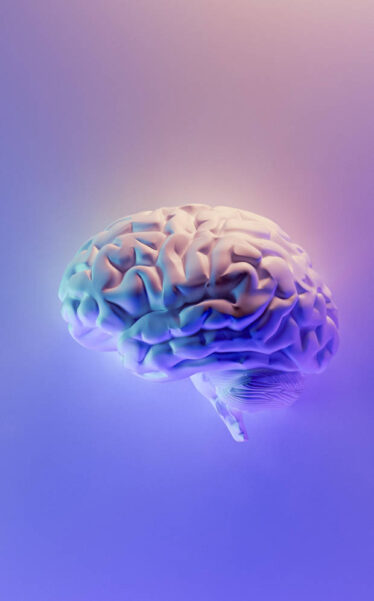Although International Parkinson’s Day is celebrated on April 11th, we believe that it is important, even after that date, to talk about it. That is why we will dedicate these words to it.
We have come a long way but Parkinson’s disease affects more than eight million people around the world. This pathology acts against the nervous system causing severe neurological damage and generating alterations in the control and coordination of body movements.
Symptoms appear slowly. The first symptom may be a barely perceptible tremor in one hand. Tremors are common, although the disorder can also cause stiffness or a decrease in movement.
That is why it is necessary to write, talk, and visualize this disease to offer better treatment to people who suffer from it.
Going into details
Parkinson’s disease is a progressive disorder that affects the nervous system and the parts of the body controlled by the nerves.
Signs and symptoms of Parkinson’s disease vary from person to person. Early signs may be mild and go unnoticed.

Symptoms usually manifest on one side of the body and continue to worsen on that side, even as they begin to affect the limbs on both sides.
People may suffer from:
1. Tremors. They usually begin in one limb, such as the hand or fingers.
2. Muscle stiffness. It can occur in any part of the body. There is a deterioration of posture and balance.
3. Loss of automatic movements. The ability to blink, smile or move the arms when walking may be reduced.
4. Speech changes. Speech may become soft or slurred and monotone.
5. Changes in handwriting. You may find it difficult to write and your handwriting may appear small.
6. Slow movements. Over time, simple tasks become complicated and take longer.
In the early stages of Parkinson’s disease, the face may have little or no expression.
The disorder affects certain groups of nerve cells in the brain.
Those that explain the symptoms of the disease are the dopaminergic neurons (defined as brain cells that inhabit the nervous system and whose mission is to produce the neurotransmitter known as dopamine, as well as to transmit it to other cells of the nervous system), which are located in the brainstem, in a region known as the substantia nigra.

Without adequate levels of this substance, tremors, rigidity, and slowness appear, which are quite common in this disease.
Although we know that the symptoms of Parkinson’s originate from a problem located in the brain, the effects of the disease involve many other body functions.
When a person is diagnosed with Parkinson’s, one of the biggest concerns is the uncertainty about how the disease will evolve.
The course of Parkinson’s disease depends on many different factors and each person is unique in this regard. Many things are not known about the disease, but it has been proven that keeping active by doing physical exercise, participating in spaces that allow you to exercise your body and mind, and seeking activities that give pleasure are protective factors to slow the progression of symptoms.
Who is affected?
One of the big questions is, who is affected? Well, the average age for contracting this degenerative disease is around 55 and 60 years old, but it can occur at less than 50 or even 30.

In Parkinson’s disease, diagnosis and testing are two concepts that accompany the patient and neurologist throughout life.
There is no standard test to decisively determine that someone has Parkinson’s disease. It can often be difficult to diagnose.
The disease should be diagnosed by a neurologist with experience and training in evaluating and treating Parkinson’s disease, ideally a movement disorder specialist. Physicians rely on a neurological examination and individual descriptions of symptoms to determine whether the person has Parkinson’s.
There are two concepts to be very clear about, Parkinson’s and Parkinsonism.
1. Parkinson: the disease
2. Parkisnonimos: the display of Parkinson’s symptoms, but without knowing if they are due to this disease.
All Parkinson’s patients have Parkinsonism, but it is not the other way around. Within the parkinsonism, there are also the motor symptoms of Parkinson’s such as bradykinesia, tremor, and rigidity.
It is necessary to point out that there are 3 main forms of parkinsonism, as well as other related conditions.
Idiopathic Parkinson’s: Most people have it. Idiopathic means that the cause is unknown. The most common symptoms are tremor, rigidity and slowness of movement.
Vascular Parkinsonism: Also known as arteriosclerotic Parkinsonism. It affects people with a restricted blood supply to the brain. Sometimes, people who have suffered a mild stroke may develop this form of parkinsonism. The most common symptoms are problems with memory, sleep, mood and movement.
Drug-induced parkinsonism: Neuroleptics (used to treat schizophrenia and other psychotic disorders), which block the action of dopamine in the brain, are believed to be the main cause of drug-induced parkinsonism.
The progression of symptoms is usually a little different in each person because of the diversity of the disease.
But the brain is amazing and has many secrets and mysteries to unravel, so it does not give up. In the early stages, this brain response works, producing mild effects that are barely noticeable to the person and their social environment.
But as neurodegeneration increases and with it the development of the disease, this mechanism fails. That is, when there are fewer neurons producing dopamine, the effects are more visible.
How many people have Parkinson’s disease?
When a large population of people has a disease like Parkinson’s disease, it is essential to know precisely how many people have the disease, where they live and why they have it.
In 2015, an estimated 6.2 million people were diagnosed and caused an estimated 117,400 deaths worldwide. To date, an estimated 10 million people worldwide are living with Parkinson’s disease.

Nearly one million people have Parkinson’s disease in the United States. This number is expected to increase to 1.2 million by 2030.
In Colombia, more than 100,000 people suffer from Parkinson’s disease and at least half a million more are affected as caregivers or relatives of patients with the disease.
The incidence of Parkinson’s disease increases with age.
The average age of onset is 60 years, but about 10% of people are diagnosed before the age of 50.
Moreover, the disease appears to be on the rise. This increase is due to the growth and aging of the population.
Men are slightly more likely to suffer from Parkinson’s than women. Different genetic, molecular, neuroendocrine and hormonal risk factors seem to be responsible for the gender difference. Thus, it has been shown that the risk of Parkinson’s disease is between 1.5 and 2 times higher in men than in women.
Another important factor is whether it is hereditary.
Although the vast majority of Parkinson’s cases are not directly inherited, researchers have discovered several genes that can cause the disease in a few families.
More and more studies make it clear that some pathologies evolve and have different manifestations depending on the sex of the patient.
Women suffer more frequently from depression, fatigue and pain, while men suffer more from speech problems, stiffness, hypersexuality and facial expression problems.
Men are more likely to develop greater disability related to non-motor symptoms, while women are more affected in their ability to function in everyday activities.

The new study of the COPPADIS project, promoted by the Movement Disorders Study Group (GETM) of the Spanish Society of Neurology (SEN), which has been published in the Journal of Clinical Medicine, has concluded that the disease does not affect men and women in the same way.
Specifically, the neurology specialists emphasize that there are important differences in the symptoms of the disease according to the sex of the patient because it influences the mechanisms of Parkinson’s disease.
Conclusions for the moment
At the moment, much is unknown about this disease. The number of people affected by it indeed seems to be increasing. Parkinson’s disease is the second most frequent neurodegenerative disease, just after Alzheimer’s disease. Worldwide, more than 6.5 million people are affected. This figure is frightening. Still, giving up and losing hope are not options.
This disease is a common problem for everyone. As a consequence of the aging of the population and the increase in life expectancy, this disease will appear more frequently. Each person living with a disease does so in a unique way. In addition, the same person’s way of living and relating to the disease varies as the disease progresses.


